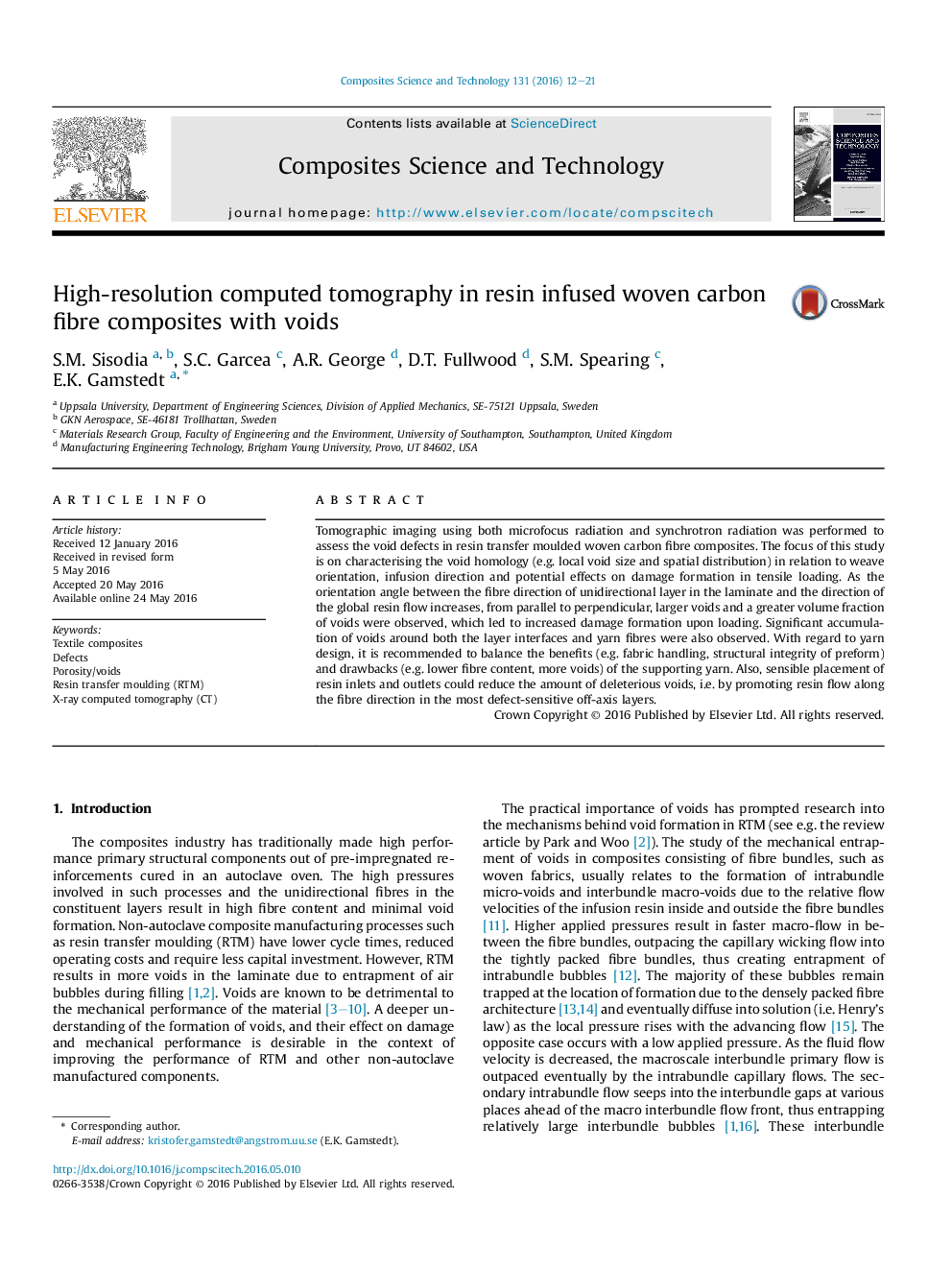| Article ID | Journal | Published Year | Pages | File Type |
|---|---|---|---|---|
| 819871 | Composites Science and Technology | 2016 | 10 Pages |
Tomographic imaging using both microfocus radiation and synchrotron radiation was performed to assess the void defects in resin transfer moulded woven carbon fibre composites. The focus of this study is on characterising the void homology (e.g. local void size and spatial distribution) in relation to weave orientation, infusion direction and potential effects on damage formation in tensile loading. As the orientation angle between the fibre direction of unidirectional layer in the laminate and the direction of the global resin flow increases, from parallel to perpendicular, larger voids and a greater volume fraction of voids were observed, which led to increased damage formation upon loading. Significant accumulation of voids around both the layer interfaces and yarn fibres were also observed. With regard to yarn design, it is recommended to balance the benefits (e.g. fabric handling, structural integrity of preform) and drawbacks (e.g. lower fibre content, more voids) of the supporting yarn. Also, sensible placement of resin inlets and outlets could reduce the amount of deleterious voids, i.e. by promoting resin flow along the fibre direction in the most defect-sensitive off-axis layers.
